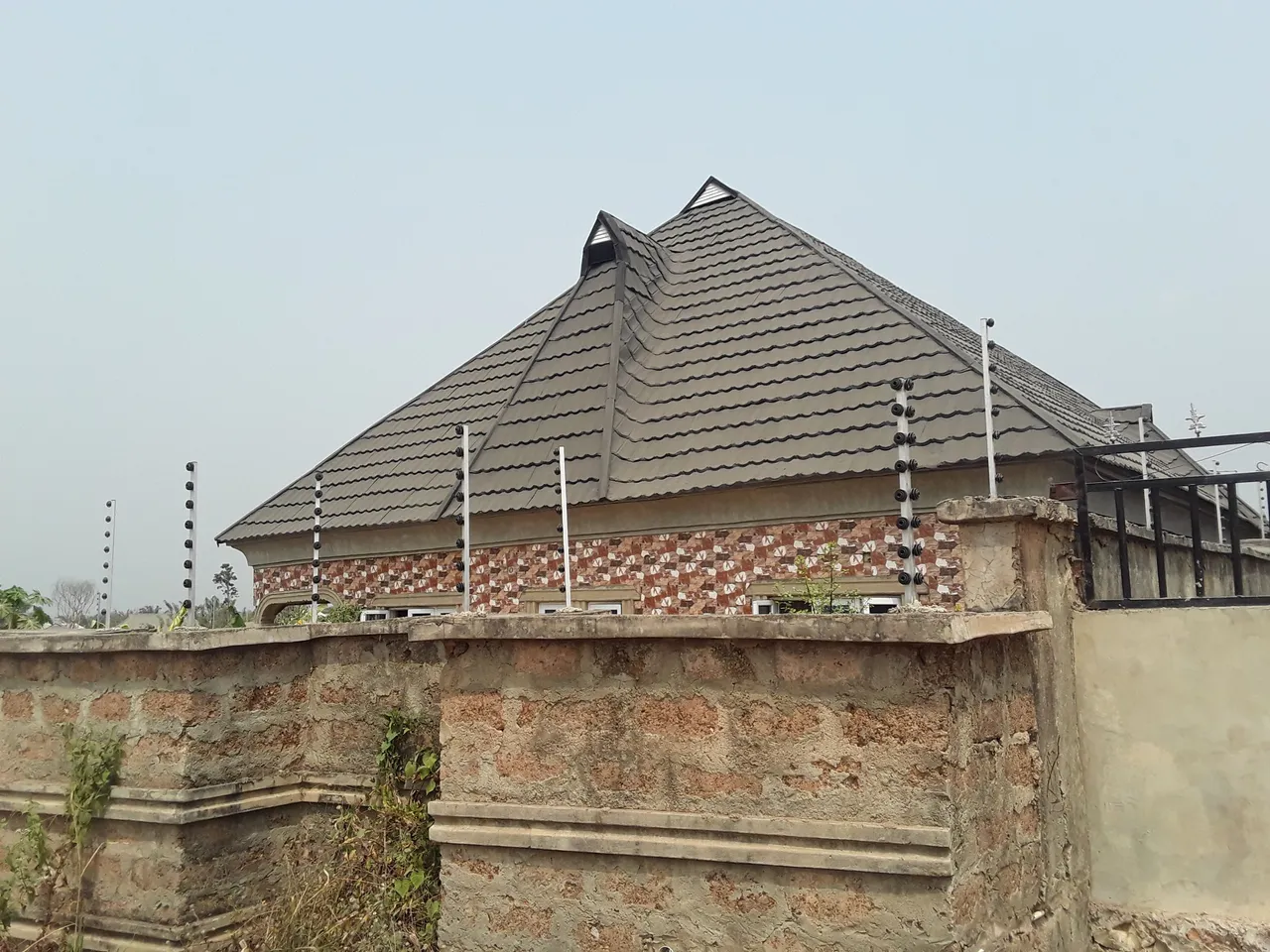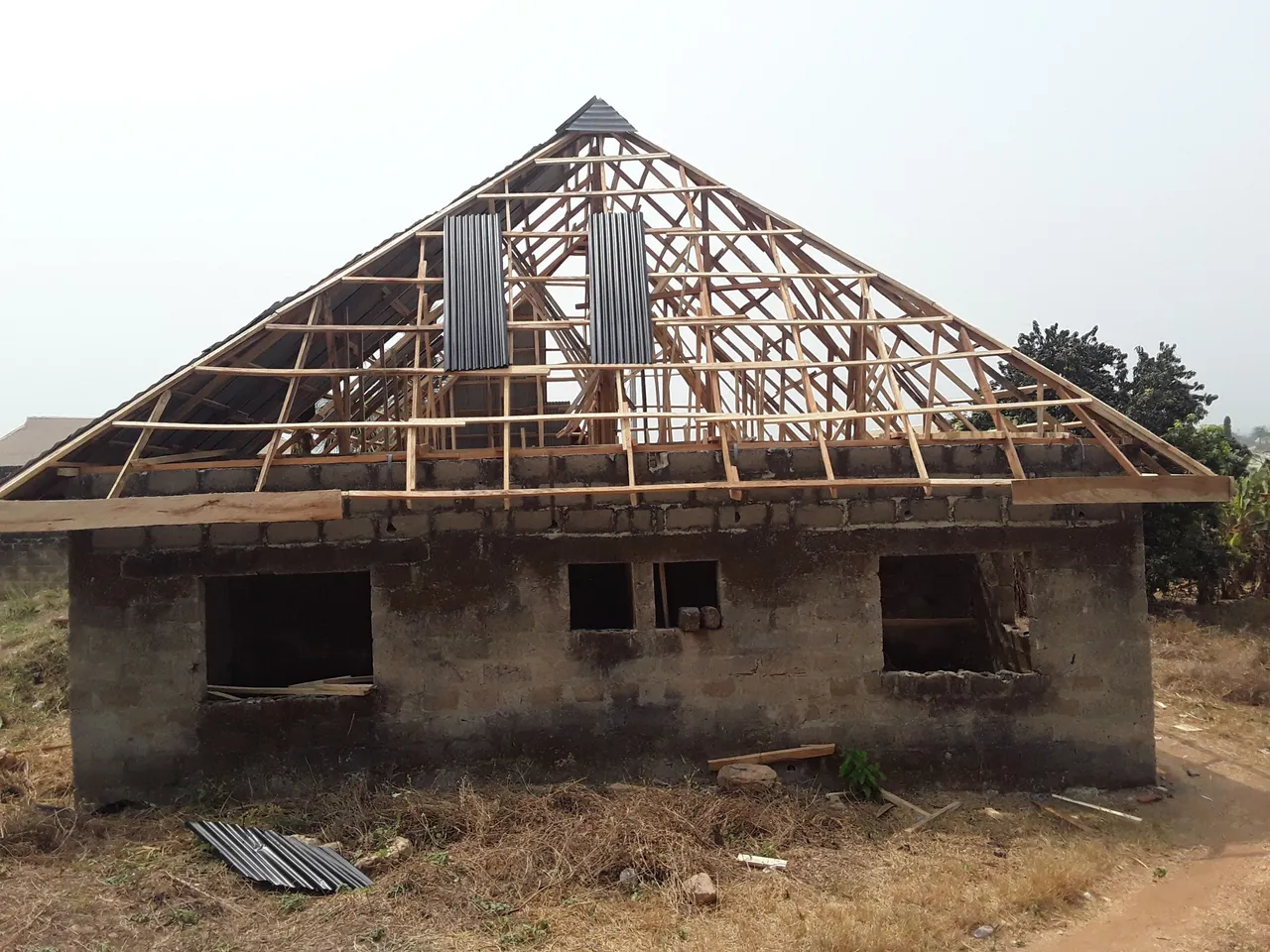Virtually everyone has seen house roofs but not many know that the shape that a house roof takes has a huge bearing on the durability of the entire structure, apart from the choice of woods and roofing sheets. I also did not know this until most recently when I got deeply involved in the entire process leading to the roofing of a house.
Initially, it was all about the type of wood that would be used to do the logging of the roof. We spent days trying to get the best possible wood to use, knowing that many of the tree species being exploited for timber and wood production nowadays are very substandard and will only take a few years before major faults start to appear.

After several to and fro, we got the necessary wood needed for the logging consisting of a mixture of Kola nitida, Irvingia grandifolia, and some unknown woody species. Back in the days before we wantonly overharvested our forest, these species could serve several uses but not as timber for wood production. But as the saying goes, half bread is better than none. The compromise was simply not negotiable as hardly wood one find good timber species such as Milicia excelsa, Bombax buonopozense, Triplochiton scleroxylon, and other species of high durability and economic values.
After getting all the necessary materials to construct the roof ready, the next is to deliberate on how the logging would be structured as this will determine the overall appearance of the roof. Out of all the factors to consider when determining the structure, the height is of particular importance. The height that a roof logging would take depends on a few factors such as:
- The design of the roof
- The economic power of the person carrying out the project. That is the owner of the building. This could indirectly be dictated by a contractor if the project is a contracted one. For direct labour, the owner is the alpha and the omega of everything.
In our own case, the carpenter in charge of carrying out the logging advised that it should be given as much height as possible. In other words, he wanted the design to be a function of the height and not the other way round. He also emphasized that the taller the wood logging, the more the number of roofing sheets that would be needed to cover it, aside from increased wood consumption. This means that the more the height of the wood logging of a building, the more the surface area of the roof, and the more it will cost in terms of finances.
There are some advantages that tall roofs have to offer. A tall roof means that the surface of the sides of the roof would be at a much-slanting position, a small angle relative to normal (90 degrees). This means that the roof would be well-drained. The chances that it will retain water after a period of precipitation would be very low. A well-drained roof with respect to precipitation will also have a very low chance of becoming rusty with time as the presence of moisture is very important for rust formation. In other words, the longevity of the roofing sheets is increased by making the wood loggings to be tall or very steep.
Water being able to drain quickly from roofs not only prevents rusting, but it also limits the chances of the roof leaking water into the ceiling of houses. Roofs that do not drain quickly will give enough space and time for water to percolate through any slightest opening in the roofing sheet and a leaking roof has the capacity to cause several other damages to buildings.
In addition to the longevity of the roofing sheets, high roofs will ensure that the surface area available for rays coming from the is greatly reduced, unlike broad surface/low roofs. The implication is that the magnitude of heat energy absorbed by the roof would be greatly reduced and the interior of the house will not be heated a lot during sunny days.

Making a roof with a good height would also limit the chances of foreign objects making the roof their abode, thereby reducing the chances of damages to the roofing sheets by foreign objects. Small children throw stones and other solid objects that can damage roofing sheets on the roof of neighbourhood buildings while playing.
On the downside, apart from the cost, however, is that tall roofs are more vulnerable to heavy winds largely due to the orientation of the entire structure. This is largely due to a simple law of physics - tall objects have a high center of gravity and are easier to displace than short objects with a low center of gravity.
At the end of the day, we settled for a 12 ft tall roof. We could have gone higher but like I said earlier, the cost would also be higher. Hence, a compromise had to be reached to maximize the height of the roof and minimize cost.
What experience do you have about roofing a house? Feel free to share in the comment section.
